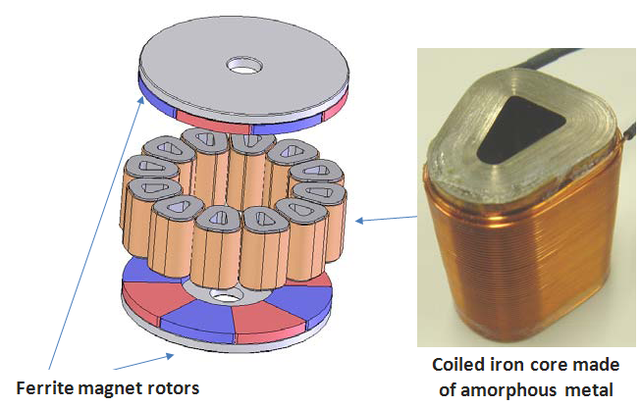liveforphysics
100 TW
halcyon_m said:Liveforphysics,
One thing you have to consider about the difference between the Honda and Toyota motors is that the Toyota motors are higher power density. They achieve this mostly by operating at high speeds. It may be more lossy, but in the automotive industry the costs are beaten down to the lowest possible value. That means driving efficiency as high as it 'practically' can be for the cost. There's a saying about electric motors that you "pay for torque" which is largely true because it requires a certain amount of material (iron, copper, magnets) to achieve a given torque value. From that perspective, using a high speed motor and gearing it down can lead to a lower cost overall solution than direct-driving. Just take a look at direct-drive wind turbines for examples there. It was almost cost effective to avoid potentially shoddy gear boxes and go with direct drive generators until magnet prices went crazy. In my application, I'm getting something like 8x less speed for 8x more torque. From my perspective, I'd rather have a gear box rather than pay for 8 motors running 8x slower.
That being said, if motors could be designed fairly effectively to operate at higher torque levels using a cost-effective process, then less gear reduction would be necessary (only a single stage), or possibly the gear box could be removed entirely. This is largely hypothetical, because if it was that easy, then it would be an existing product. The closest we have to that is the bike hub motors with 20+ pole designs where the extra magnetic material (steel/iron) is lessened by the smaller and more frequent magnetic loops. However, iron losses become a significant issue at the speeds(frequencies) achieved by the 10 pole toyota motors, where eddy currents in the steel cause heat and drag losses. From that perspective, having more than 10 poles doesn't seem to make much sense, at that speed at least. So if the 'electrical speed' (frequency) is limited, then I can see why practically the most cost effective design has evolved to where it is now (considering air gap tolerances and such).
I agree with you completely my friend with respect to paying for motor torque, it's true. It's also true that stacking 8 high RPM motors together on a common shaft and then running them at 1/8th speed can be silly and costly.
The trick is to run motors made to efficiently make torque in the wheel speed range you want. They don't have to be big or heavy, though if you keep with a conventional radial topology and just grow it longer until you're making the torque you want it does end up big and heavy and costly.
If you start with a topology designed from the ground up for low-speed high torque, you can have your cake and eat it too.
One of these per wheel is an example. They would fit the size requirements, and eliminate all the additional stages of losses from gearing/oil/diffs etc. Driveshaft to each rear wheel directly, no other stages of loss needed when the motor is designed to produce the force you require at the speed range you want.
http://www.yasamotors.com/products/yasa-750/
I realize those are pricey now, but that isn't a topology inherent drawback (they would be dirt cheap and available if toyota was running them in the Prius or something though). Looking at the Honda efficiency map, I think the Honda IMA motor stages (which are dirt cheap and available) may get you something even higher efficiency than the Yasa (which is >95% for most of it's range already).



